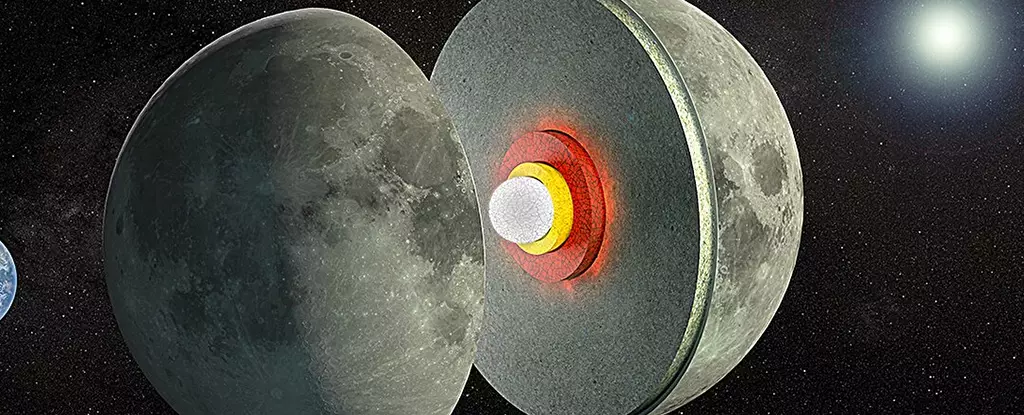In an intriguing revelation, recent research conducted by scientists from NASA’s Goddard Space Flight Center and the University of Arizona suggests that the Moon may harbor a partially-molten layer nestled between its rocky mantle and solid metal core. This hypothesis builds upon decades of speculation and investigation into the Moon’s geophysical characteristics, but now, thanks to advanced gravitational analysis, the evidence appears more compelling than ever. Prior studies lacked the conclusive data necessary to affirm the existence of such a layer; however, this research utilizes cutting-edge technology to offer a substantial glimpse into the lunar interior.
The Moon, while appearing rigid and lifeless from the outside, is a complex entity influenced by both the gravitational forces of Earth and the Sun. These celestial bodies exert tidal forces that manifest not only in the Moon’s shape but also in its gravitational field. This phenomenon, akin to ocean tides on Earth, results in subtle yet significant physical deformations affecting the Moon’s crust and mantle.
The groundbreaking findings stem from data obtained through NASA’s Gravity Recovery and Interior Laboratory (GRAIL) and Lunar Reconnaissance Orbiter (LRO), which have allowed scientists to track the lunar surface’s rigidity and tidal variations over time. For the first time, yearly estimates of these tidal changes have been made possible. The newly collected data led researchers to develop computer models that describe the Moon’s internal rock structure. These models indicate that the mantle cannot be entirely solid, as it needs to demonstrate some viscosity for the observed gravitational behaviors to align.
The implications of these findings are profound. These models support the notion of a Low-Viscosity Zone (LVZ) at the Moon’s base, positing that this semi-fluid layer is essential for integrating the observed data into a coherent understanding of the Moon’s interior. Scientists have long speculated about the presence of such a zone, but previous evidence had failed to provide a definitive conclusion.
The study provokes further inquiries about how this partially-molten layer emerged and what ensures its heat retention. According to the researchers, the mineral called ilmenite, a titanium-iron oxide, may play a pivotal role. The research suggests that a rich layer of ilmenite could facilitate partial melting, paralleling recent findings from Martian geology. This analogous situation sheds light on the potential for similar geological processes occurring within the Moon.
There exists a significant knowledge gap concerning the origins of the LVZ. The methodologies employed to uncover details about subterranean layers often hinge upon informed hypotheses, shaped by current understanding of planetary dynamics. The software-based models rooted in existing geological data reflect educated speculation rather than outright depictions of lunar composition.
The research holds vital implications not only for our understanding of lunar geology but also for future lunar exploration missions. As humanity stands on the brink of establishing a permanent presence on the Moon, seismic instruments deployed on its surface could provide unprecedented insights into the Moon’s internal structure. If operational, these instruments would vastly enhance our understanding of the Moon’s thermal state and geological evolution.
The presence of an LVZ raises questions about the thermal history of the Moon and its potential for harboring geothermal energy resources. As we seek to establish habitats and conduct scientific research on the Moon, understanding its inner workings becomes critical for ensuring sustainable human activity there.
The prospect of a partially-molten layer within the Moon’s mantle signifies a major shift in our understanding of lunar geology. The integration of careful measurement and innovative modeling methods is enabling scientists to reevaluate long-held beliefs about the Moon’s internal composition. As further explorations are undertaken, particularly with advanced seismic equipment, we stand on the threshold of unlocking more secrets about our lunar neighbor, enriching our comprehension of its history, evolution, and the broader dynamics of celestial bodies in our solar system.

